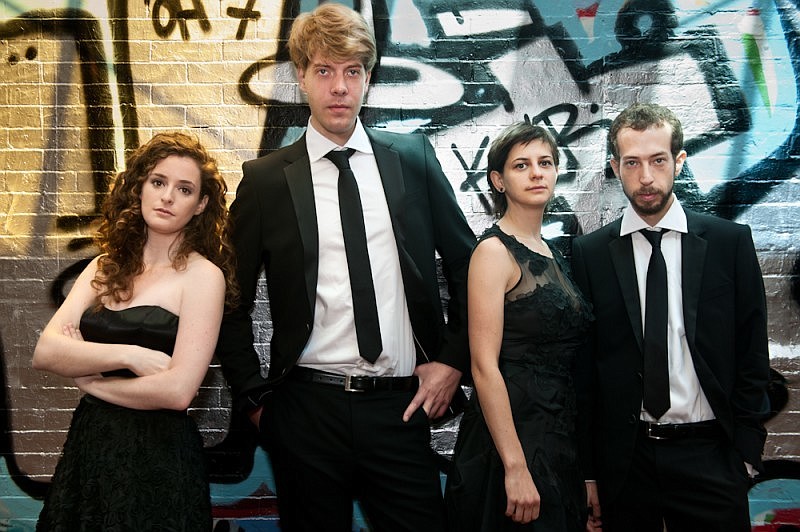- November 26, 2024
-
-
Loading

Loading

History is being made this season in Sarasota. The Ariel Quartet, under the auspices of The Perlman Music Program, is presenting the complete cycle of Beethoven String Quartets and, with all the chamber music that’s been performed in Sarasota over the years, it’s the first time the cycle will have been played in one season in this city. It took a fresh, young quartet of musicians — violinists Gershon Gerchikov and Alexandra Kazovsky, violist Jan Gruening and cellist Amit Even-Tov — to bring this cycle to us, and they’re doing it before any one of them turns 30.
Rather than presenting the cycle in numerical order, The Ariel has chosen to play one quartet from each of Beethoven’s early, middle and late periods, so we are able to hear the evolution and revolution the composer went through as he not only aged, but also as he became increasingly deaf.
If this week’s concerts set the example for future performances, it’s going to be a fascinating journey. The first concert, which took place last Tuesday, offered the F major, No. 1, from Opus 18, composed in 1799; the “Serioso” Quartet, Opus 95, No. 11, coming from the composer’s middle period in 1810; and the Opus 127 in E flat, written in 1824.
For the first two quartets, the Ariel’s first violinist was Gerchikov, with Kazovsky playing second. The ensemble’s breadth of coloring, wondrous phrasing, control and ability to breathe with the music brought the composer’s magic through the music. But, even better, the ensemble’s ability to focus each musician’s virtuosity into a singular sound made its playing so spontaneous and rich, it was the true essence of what chamber music should be: vital, alive and natural.
The “Serioso,” which is the only quartet for which Beethoven offered a subtitle, is a biting, strongly emotional work with unison statements the members of the Ariel played like one person. It was a sweeping performance, always with a point, in sound and direction. Mendelssohn, commenting on this piece, once said it was Beethoven’s “most characteristic work.” Interestingly, the final movement of this Opus 95 sounds Mendelssohnian with, perhaps, a slight nod to things to come.
Beethoven’s Opus 127, however, is the future. Part of the composer’s late period, violinists Gerchikov and Kazovsky switched roles, with Kazovsky taking the first chair. Between the angularity and almost dissonant sound of the music and the different timbre of the ensemble, because Kazovsky’s sound is leaner and more modern than that of Gerchikov, it was like hearing a different ensemble playing a different composer.
Here is the angry, almost disjointed Beethoven, perhaps looking — inside his now completely deaf head — toward a future only he could hear. This was not a popular piece when it debuted in 1824, and it’s still difficult to hear and, certainly, to perform. The Ariel, using even more body language than it did in the first two quartets, caught the right mood of ferocity, digging in with a fierceness and fragmentation that is practically 21st-century urban clamor.
Robert Schumann, the great romantic composer, said of these string quartets, “True lovers of Beethoven lock the doors, savoring and reveling in every single measure.” The Ariel still has 11 more works to play in the course of four more concerts in February and May. They all take place in the intimate (though sterile), acoustically friendly Selby Auditorium on the USF campus in Sarasota, and I’m sure we will be savoring and reveling in every one of these historic performances.